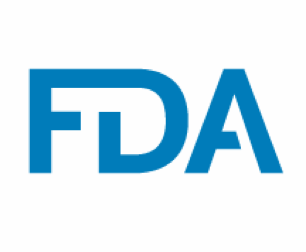FDA’s John Whyte Delves Deeper into Patient Centricity
The FDA’s Dr. John Whyte offers his perspectives on patient centricity and the issues that FDA and industry are facing.
Dr. John Whyte, Director of Professional Affairs and Stakeholder Engagement at the FDA, recently shared some perspectives on patient centricity at eyeforpharma’s Patient Centered Clinical Trials conference. In this interview, Whyte will delve deeper into the definition of patient centricity, and discuss some of the issues that not only the FDA, but also the industry as a whole is facing.
What is the FDA’s stand on patient centricity?
John Whyte

JW: "Patient focused" and "patient centered" are common buzzwords being thrown around today. Everybody wants to put "patient" in front of a word and then say that they are thinking about patients. All too often, it seems to me, as an outsider from the industry, that patient engagement or patient centered is that you have talked to patients. That's not what the Center for Drugs is thinking about when we are talking about patient engagement. Patient engagement is about two-way communication, especially as it relates to trial design. It is about, early on, figuring out what your endpoints are and how you determine them with the patient in mind.
For example, in diabetes, we have a well-established measure: HbA1C. If you don't meet that as your primary measure, you are not going to get approval. There are other issues in diabetes: in talking to patients, we heard from them that HbA1C didn't matter to them in their lives. They talked about issues of hypoglycemia and were also often worried about hyperglycemia. In the elderly, there are more instances of low blood sugar than there is of high blood sugar. So, the patients talked about the issues of low blood sugar, of frequent testing, and about what other measures were important to their lives as patients with diabetes. You would think that diabetes is not going to be one of those disease areas where we are not having enough patient engagement, but, here at the agency, we brought together nearly 300 people at a meeting and nearly 500 people online. That shows the interest that patients are concerned about not being heard.
What are some of the hurdles that biopharmaceutical companies face while taking the patient-centric approach?JW: Many folks say that if the agency does not ask for it, the industry is not going to do it. Often physicians like to think that they know what's important for the patient so they should be the ones that determine the measure. But talking to patients is complicated. Companies always ask how they should find and talk to patients.

There is also the fear of talking to patients; the fear that if a biopharmaceutical company doesn’t say the right things to the patient, they're going to get in trouble. But our issues at the agency in terms of communication with patients often revolves around off-label promotion. It is very hard for us to understand all elements of the disease and what really matters to those peoples’ lives. Not just how people feel or activities of daily living as endpoints, but more substantive measures as well. Everyone presumes that they know what a person suffering with a disease thinks. The American Lung Association did a survey of caregivers and patients and they asked them both the same question, "what's more important to the patient: quality of life or length of life?" Turns out, the caregivers thought quality-of-life was more important, but the patients cared more about their length of life. So, we should not presume that we know what's most important to the patients without first asking them.
There is this desire and need for patients to be engaged. It is important to have the whole spectrum of the healthcare community involved. We have all been at fault for this, including the agency because there are so many parties involved: the patients, industry, regulators, doctors and the insurance companies, we have all these conversations separately, and not in unison.
How can sponsors and patients benefit from the patient centric approach?JW: It's an exciting time to be involved in patient engagement because there is a sea change in terms of what people think, but we are not where we need to be. Companies still ask why should they talk to patients. “I'm a scientist or a reviewer,” or “I'm a physician and I look at data, so how does that impact whether or not a drug is approved?" That is very much an oversight. There is a tremendous heterogeneity in terms of what patients and patient groups know about the FDA drug approval process. That can be very frustrating. If we could help patients understand how a drug is approved that would also help in collecting information from them. It is flippant when many folks say that patients just want the drug to be approved. That's not true. When you talk to patients they want to be involved in that calculus of benefit versus risk. They want to know that it's going to impact what's important to them. Part of it is helping folks that have never been involved in drug development understand how a drug comes to approval, but, we can still help to educate patients and that something that my office has been trying to do.
How can sponsors incorporate validation in methodologies when engaging patients?JW: I have been hearing a lot of folks talk about surveys lately. In the scientific literature, we have rigorous methodological strategies. We do our power calculations and we get our P values at 0.05. Yet when it comes to surveys, all the rigorous methodology seems to evaporate. Too often, folks just seem to have a group of patients come in or they are going to put something online. What is challenging is that many of us know that there is a methodologic science to doing surveys. When we want to do survey, it's not about just plopping it online and getting the first 50 people to do it. That's not something you would submit to the agency. You would want follow the methodology that a lot of survey companies and survey experts do very well.
The whole point of patient engagement is utilizing patients’ unique expertise to determine what is clinically meaningful to them and how they evaluate risk vs benefit. It’s not about finding 100 or 1,000 patients and simply talking at them. It's about doing research around patient engagement in a methodologically rigorous way, which is reproducible and also representative of patients. I don't want to go back to the idea that you put a patient on a committee, or bring one to a meeting; one patient could never represent the opinions and the preferences of all patients. It depends on your disease state, it depends on your stage of disease. What we need is a reflection of what patients are thinking and what matters to them.
Addressing Disparities in Psoriasis Trials: Takeda's Strategies for Inclusivity in Clinical Research
April 14th 2025LaShell Robinson, Head of Global Feasibility and Trial Equity at Takeda, speaks about the company's strategies to engage patients in underrepresented populations in its phase III psoriasis trials.
New Insights Into T Cell Exhaustion and Inflammation in Long COVID
April 17th 2025Nigel McCracken, chief operating officer, Virax Biolabs, discusses new findings that reveal altered cytokine activity and evidence of T cell exhaustion in long COVID patients, providing deeper insight into post-infection immune disruption.
Amgen’s Imdelltra Demonstrates Significant Overall Survival Improvement in Small Cell Lung Cancer
April 16th 2025In the Phase III DeLLphi-304 trial, patients with small cell lung cancer administered Imdelltra achieved a statistically significant and clinically meaningful improvement in overall survival compared to standard-of-care chemotherapy.